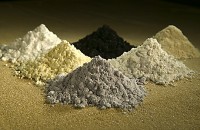QLD’s rare earth elements are a boost to mining and technology
 While it is still one of the largest industries in Australia, mining has somewhat slowed down over the past few years.
While it is still one of the largest industries in Australia, mining has somewhat slowed down over the past few years.
To help keep the mining industry and resources sectors in a stronger footing, the Ministerial Advisory Committee for Exploration (MACE) has shown off some of its recent work and discussed its future plans for exploration within areas known to have rare earth elements (REEs). Of particular focus is North West Queensland, where rare earths have been discovered in the North West Queensland Minerals Province.
Moving into the future (MACE discussed part of their vision for the next 30 years), further explorations will take place in order to discover more rare earth elements. The Mary Kathleen uranium mine, which was closed back in 1982, is one of the areas that will explored. Along with possessing uranium, Mary Kathleen also has a number of rare earth elements.
It’s believed there’s approximately 7 million tonnes of REEs situated at Mary Kathleen, making it the largest known resource of REEs in Queensland.
REEs aren’t just an economic and mining boost for Queensland. As elements themselves, REEs exhibit special electronic, magnetic, catalytic and optical properties. These properties are relatively unique to REEs, and it can be hard for any other elements to substitute the role and use of an REE.
As the world looks towards alternatives to carbon-based elements, REEs represent one of the most critical shifts in the space. If embraced and more frequently excavated, REEs will speed up shift from a carbon-based economy to a newer electron economy. These REEs can be used in high technology and, importantly, environmental applications.
Of course, REEs are finite, but Australia happens to have one of the largest supplies of these elements. As the world turns to embrace the earth elements more and more, it could present a massive boost to Australia’s economy and role in forward-thinking technologies.
* Image source
“Rareearthoxides” by Peggy Greb, US department of agriculture. Original uploader was Materialscientist at en.wikipedia – Transferred from en.wikipedia(Original text : http://www.ars.usda.gov/is/graphics/photos/jun05/d115-1.htm). Licensed under Public domain via Wikimedia Commons.